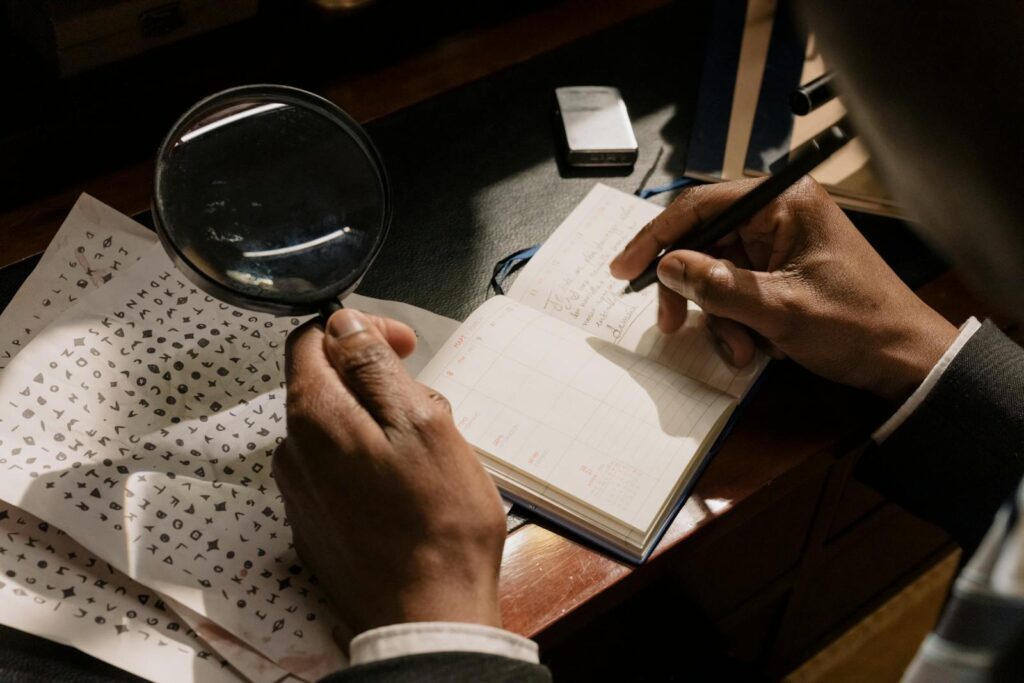Now Reading: Forensic Identification of Forged Document on the basis of their Ink Profiling
-
01
Forensic Identification of Forged Document on the basis of their Ink Profiling

Forensic Identification of Forged Document on the basis of their Ink Profiling
Questioned Documents
The documents whose authenticity is questioned or suspected, called as “Questioned documents”. A “Questioned” document can be anything like signature, handwriting, typewriting or printed, or other mark or sometimes on crime scene written something on other surfaces e.g. wall, whose source or authenticity is in dispute or doubtful.
Document Forensics
In current world, document plays an import role in everybody’s life. Documents affects everyone’s life from birth to death, e.g. from birth certificate to death certificate, and from identity card to property documents are used through out of human life. Document Forensics is the part of forensic science pertaining to documents that are disputed in the court of law. Document forensics is that the field that has emerged to help the interpretation of evidence in court of law, which deals with getting evidence from the questioned documents.
Ink can be a liquid, paste or powder which used to produce images, text, or to make designs. Ink used for drawing, writing, painting with a pen, pencil, brush, quill or printer. Ink has existed and used from the ancient world.
To improve the ink, modern ink is containing substances like dyes, pigments, surfactants, resins, lubricants, linseed oil, solubilizers, particulate matter, humectants, driers, vehicles, waxes, greases, soaps, detergents, etc. Each component serves as different purpose like dyes or pigment are used as a colouring material. That colouring material can be dye or pigment or might be combination of both. Dyes are soluble in the liquid body of ink i.e. vehicle. Pigment are isolable in vehicles as they are finely grounded multi-molecular granules. The composition of vehicle in ink affects the flowing and drying characteristics of the ink. The main aim of most analysis is to determine whether two pieces of written/printed material originated from the same ink.
The major classification of ink which may encountered in analysis are ballpoint pen ink, roller-ball pen ink, marker ink, fountain pen ink, fiber tip pen ink, plastic tip pen ink, gel pen ink, porous-pen ink, rubber stamp ink, offset printer ink, letterpress ink, dye pack, typewriter ink, copier/printer toner and inkjet inks. Mostly inks are in aqueous, liquid, paste or powder form.
Some information about these inks are as follows:
- Fountain pen ink
There are two types of fountain pen ink available, iron gallotannate type and aqueous solution of synthetic dyes. In current era, modern inks of type two contain synthetic blue dyes to provide an immediate blue colour to which gradually turns black after oxidation on paper.
- Ballpoint pen inks
Ballpen point inks consists of synthetic dyes (sometimes carbon or graphite is also added) in various glycol solvent or benzyl alcohol. The dyes in ballpoint pen inks can consist of 50% of the total formulation. The water based pen inks are obviously water soluble, where the xylene based inks are water resistance and can only be dissolved with strong organic solvents.
- Dye Pack
Dye pack is red stain used to mark stolen money or currency. It is a radio-controlled incendiary device used by some banks. Dye pack contains 1-methylaminoanthraquinone (MAAQ), as other dyes.
- Printing Ink
Printing inks are formulated to transfer and reproduce an image from a printing surface in order to convey a message. The printing film thickness is depend upon the process used which is usually 2 and 2 µm. Colour printing inks basically consist of linseed oil, soyabean oil, or a heavily petroleum distillate as the solvent (called as vehicle) combined with organic pigments made up of salts of nitrogen.
Analysis of ink
It does not mean that a document appears to have been written throughout in the same ink has not been altered or added to. In current era, with advance technologies criminals find various ways to alter the document, and those document become almost impossible to identify by the naked eyes. Knowledge about the composition and mechanism of inks is necessary to distinguish the different between inks used to produce a fake or disputed document and to compare various inks to identify the source of the printed document.
Ink analysis does not focus on new chemical or analytical methods or techniques. It is a step to extend the discriminating power of enforcement agencies which may use the advance techniques of ink analysis or testing during their chemical investigation.
Primary examination of a disputed document under microscope provides informative data. The ink can be analyzed or tested by destructive or non-destructive methods.
- The destructive methods are usually adopted in the case when sample needs to be taken from the document. It is preferable to approach the non-destructive methods first so the content of document is left intent and as the destructive methods, alter the document under analysis.
- Some of non-destructive ink analysis method as follows:
- The main method of non-destructive ink analysis is examination of ink using Video Spectral Comparator. The VSC is an imaging device that permits an examiner to research inks, visualize hidden security measures, and reveal alterations on document. It involves recording of spectra, absorbance, transmittance, and reflectance mode based on the amount of light transmitted, absorbed and reflected respectively. The microscopic analysis of document of a document by Fourier Transform Infra-Red Spectrometry can also provide valuable and distinguishable data for all different types of inks.
- The coupling of scanning microscope alongside Energy-dispersive X-ray Spectrometry (SEM-EDX) is another non-destructive analytical technique used for basic analysis or chemical characterization of ink. SEM provides detailed high resolution images of the sample by rastering a focused beam across the surface and detecting secondary or backscattered electron signal whereas EDX provides elemental identification and quantitative compositional information about the sample. Where there’s impossible to collect the information about the ink from non-destructive analysis method, the destructive methods also can be employed.
- The main method of destructive analysis of ink is Thin Layer Chromatography (TLC). Actually, it is not very destructive to the document if through with care. However, a photographic record of the original document is taken before the procedure is started. A small sample of the inked paper is punched out employing a thin, hollow needle; a hypodermic is right. The sample is placed during a test tube with a solvent that dissolve the ink. Next, a small spot of the sample solution is placed onto TLC plate, alongside spots from various reference ink samples. The TLC plate is placed in a beaker containing a little amount of another solvent. It’s positioned in order that the plate dips into solvent but the spots of sample remain dry. The solvent is involved the TLC plate through capillary action and therefore the sample spots move up with it. The top result with TLC may be a pattern of coloured spots, referred to as a chromatogram for every ink. Different inks will have different chromatograms. If the sample ink has an equivalent chromatogram together of the reference inks, it suggests they’re an equivalent, then identifications are often made.
- Another technique available and called as High Performance Thin Layer Chromatography (HPTLC), is an enhanced sort of TLC and may be used as an alternative. It involves the appliance of ink samples and standard on chromatographic plate and developing the plate in suitable solvents. After the chromatographic development it allows the detection and scanning of spots alongside the documentation of chromatic plate.
- UV visible Spectrometry is another destructive technique to spot what is an ink. An UV visible spectrophotometer is an instrument used to measure the amount of ultraviolet (UV) and visible light, which causes electrons to move over from one energy state to a better one. The amount of light that reaches the instrument’s detector, then recorded as a spectrum. The element analysis of ink can provide excellent distinguishable features for ink. Inductively Coupled Plasma Mass Spectrometry or ICP-MS is an analytical technique used for elemental determinations. The basic profiling of ink can prove as an efficient tool for the analysis of suspected ink and thus it’s comparison with the profiling of standard inks.
From all this techniques Fourier Transform-Infra Red Spectrometry is considered to be a powerful technique than others. It is used to obtain a spectrum of solid, liquid or gas based on functional groups of the compound present in sample. An FTIR spectrometer simultaneously collects spectral data in a wide spectral range. As a fingerprint, no two unique molecular structures produce the same infrared spectrum. This makes infrared Spectrometry useful for several types of analysis for different inks.
Author:
Swetangkumar Patel, Intern Dept of Forensic Science & CI, Legal Desire Media & Insights.








